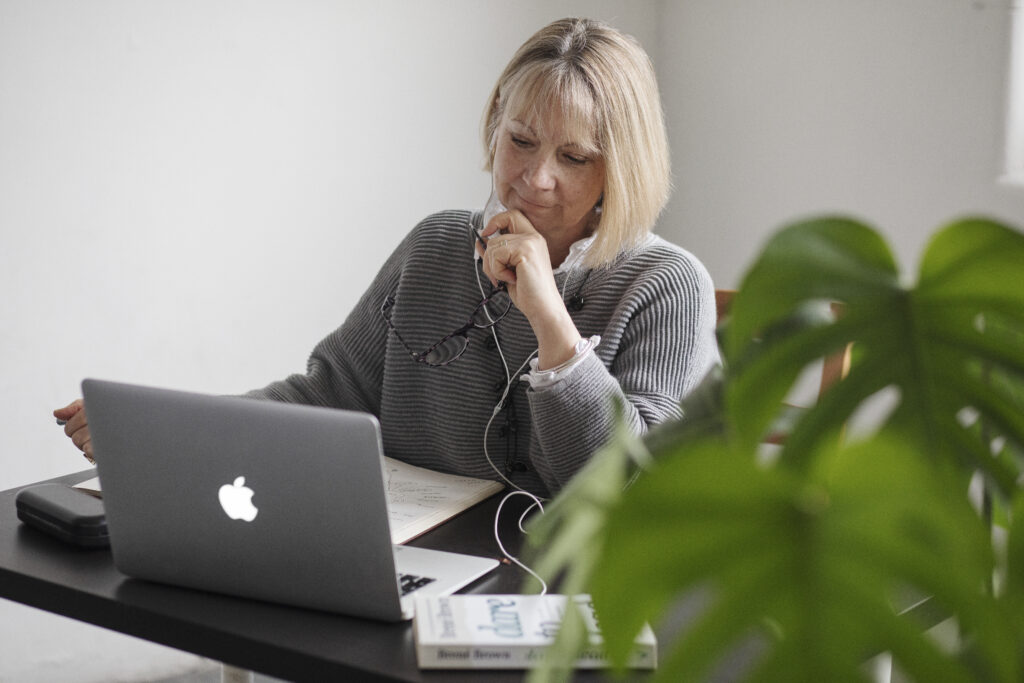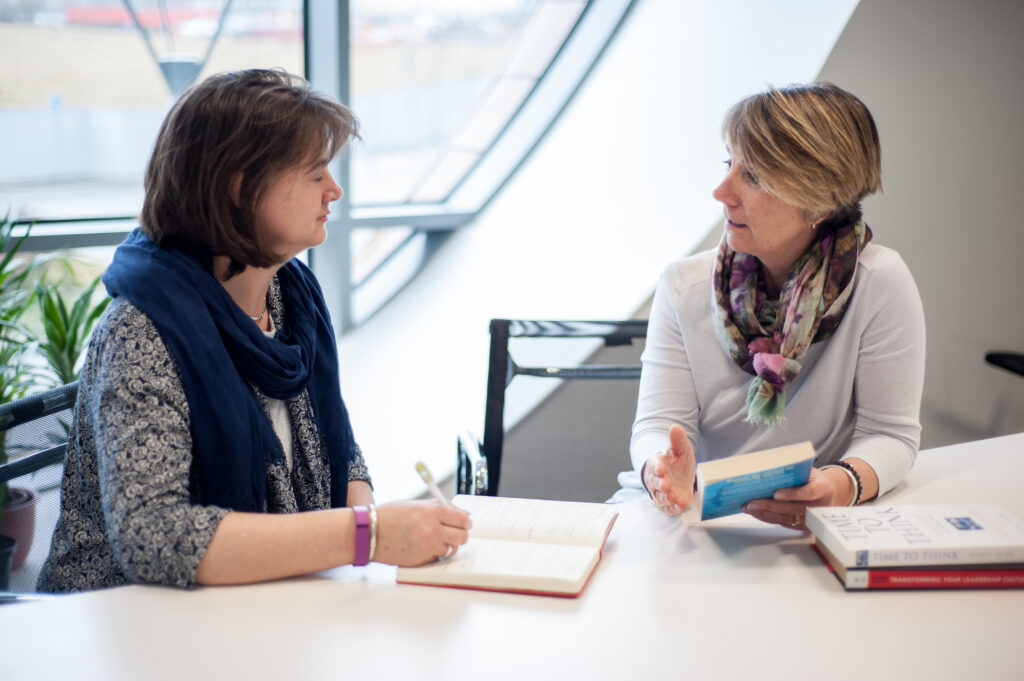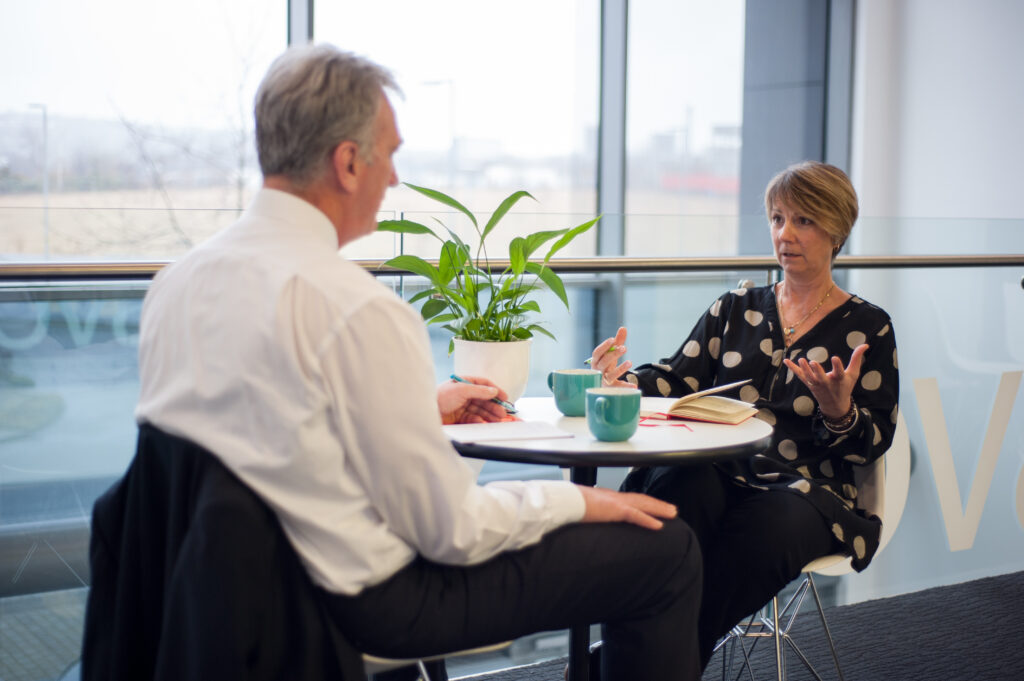The CEO’s story

Support to develop better self-awareness and meet personal aspirations
The CEO’s story - “So many ideas – but we can’t agree how to realise them”
Chris, the CEO of a thriving design studio, was struggling to balance his creative output with the demands of running his own business. His team was finding it hard to realise their many ideas and translate them into further business success. When Chris approached Julia for help in reaching his goals, it began as a one-on-one arrangement, but developed into group coaching with other senior members of the team.
Chris and Julia agreed to talk every two weeks, to create a sense of urgency and help Chris to stay focused on his aspirations and goals to grow and expand the design business.
When the coaching sessions began they were very much focused on Chris’s position within his company and how his drive had brought him to a place where his creative talents could support not just him and his family, but other people too. As that first session went on and Julia began to ask more questions about Chris’s childhood, a number of important issues began to emerge.
“I’m the youngest of two sons. And sometimes I feel like nothing I ever do will be good enough. My older brother does what our father would call ‘A proper job.’ Me? I feel like I’m ‘just drawing’. And I feel that it’s never quite enough, there is always more I could – or should – be doing.”
Chris was walking a fine line between the pressure to be perfect and feelings of ‘it’s not good enough – so why bother?’ A cognitive dissonance that was causing him great distress. To explore this in a safe and contained way, Julia asked Chris to complete a transactional analysis questionnaire.
The aim of this work was to uncover Chris’s drivers, the unconscious internal pressures that influence his actions and make him behave in a certain way.
“As we looked at the things that drive me, and started to explore where they might have come from in terms of my background, I began to see where - and why - points of friction were happening in the office. After all, if the CEO of a company only really wants to chase after new ideas and design, where does that leave the rest of his team – and his business?”
Chris began to understand the impact he was having on his team when he wasn’t engaged in the running of the business. And he saw how frustrated he was with the demands of the operational side of running his own business.
“The nuts and bolts. The boring stuff. I find that really hard. It’s not my thing at all. I’d rather be out there, seeing what’s happening and getting things moving. I find it excruciating when people can’t keep up, when I have to keep explaining the details – especially when to me they’re so obvious.”
At this point, and with Chris’s agreement, Julia also began to work one-on-one with the two other partners in the business.
“It became clear that Julia might be able to help us with the areas in the business where – quite frankly – we irritate the hell out of each other.”
Through working with Chris’s senior team, Mike and Sunil, it emerged that each of the three men was very different to the other. Each of them worked well in certain areas of the business, and fell short in others. And it was around these differences that the repeated feelings of anger and frustration arose.
With Julia’s support the team decided to share their transactional analysis profiles with each other, to see if they could shed some light on the areas where they kept getting stuck. The results were startling. Not least for Chris.
“It became clear what was happening – and what we could do about it. How Sunil was the glue that kept us together and how he negotiated between Mike and I. And how Mike was so good at the parts of the business that I find hard. And how he hated finding new business – while I love that side of things.”
By looking at their similarities – and their differences – the partners could clearly identify their strengths and weaknesses and understand what they mean for them as a team.
“Seeing it in black and white. On paper like that. It showed each of us what we bring to the business and how we can function as a strong and cohesive team – without wanting to kill each other. It also highlighted how – and why – we’d been going wrong in the past.”
The work revealed that to function well, the partners needed to be more honest with each other and to better recognise what they termed, ‘the power of three.’
Julia facilitated a conversation with the three men around a table in their office. The conversation was carefully planned to ensure that everyone felt able to challenge what was being said in a manner that was both constructive and helpful. The theme of the conversation was, ‘Setting the Table for the Future’ and it aimed to get each partner to buy in to a shared vision and plan for their future together as a successful business.
Chris chaired the session in his role as the CEO and presented a five-year plan to the team. Afterwards he said that it was “The best meeting we’ve ever had.” The partners agreed a clear structure for each of their roles within the business and committed to holding monthly conversations to discuss their targets and performance.
“What I found, after working with Julia, was that the parts of running a business that I found boring – the nuts and bolts of it all – are actually the fundamental elements that I know will allow us to move forward and grow. Each of us now knows which part of those nuts and bolts we’re good at – and we’re working well together to move forward and to grow.”
Since Julia’s work with Chris and his team their business has developed from a small design studio to a full branding agency. Together Chris, Mike and Sunil have expanded their client work to London from the north of England, meeting Chris’s aspirations to grow the business and work with larger clients.
3 weekly sessions with Chris, 2 each with Mike and Sunil and a round table conversation with all three partners.
Each case study has been read, approved and verified by the client involved and is a true reflection of the work undertaken and situations addressed. Due to the highly sensitive nature of the topics discussed and the professional roles held by those interviewed, all names have been changed to protect client identity.
Case Studies



